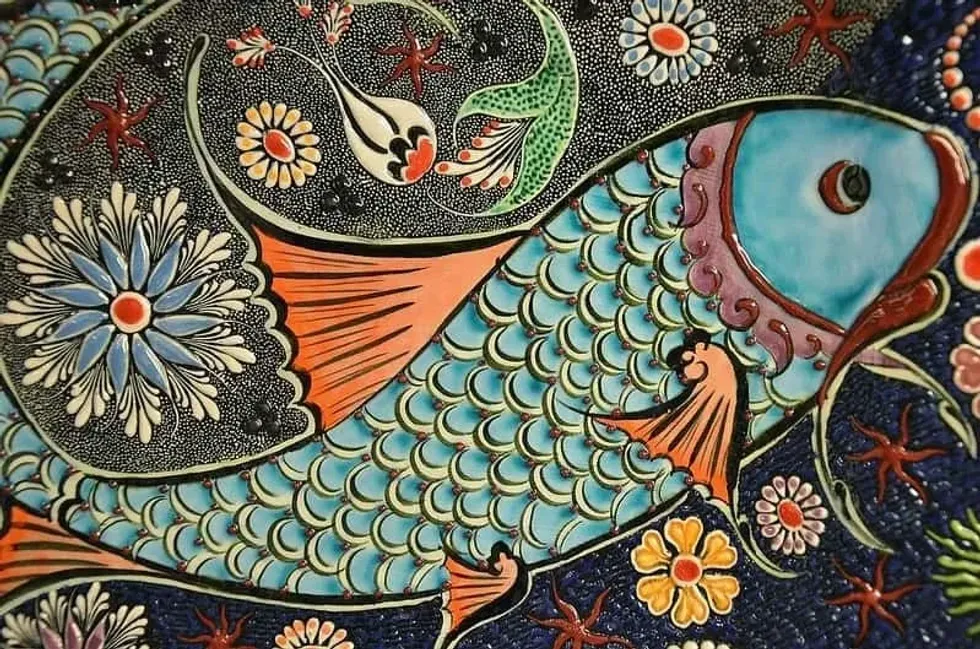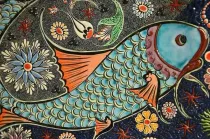The Romans were known for their masterful craftsmanship and art.
Mosaics are a part of that legacy, it's important that kids in KS2 know what Roman mosaics are and why they were created. We'll take you through lots of free resources and fun activities to help when teaching your kids about the years of the Romans!
Once your primary school kids learn about these amazing creations, you'll be able to put this knowledge to the test by asking them to make their own!
What Is a Roman Mosaic ?
Roman mosaics are beautiful stones that are arranged to create a stunning floor. Roman mosaics were found in the homes of people who lived during the Roman times.
These richly coloured tiny stones are a part of Roman history and it's important to teach them and learn about them in school. This is because the mosaics captured moments in everyday Roman life: scenes of history like wars, tributes to Gods and deities, as well as ceremonies and rituals were all featured in Roman mosaics.
This provides us with an insight into what life was like for the Romans. They are really useful resources for teaching about Roman life.
Mosaics are intricate pieces of work, typically the Romans used a thousand pieces to make one mosaic! The little stones they used are called 'tesserae'.
These stones were stuck to the floor using a specific type of cement called mortar., this process took years of practice and training. But, the Romans who made these mosaics were not considered artists so they did not sign their work and therefore we don't know who did each one. Instead, they were called craftsmen.
Mosaic art was often in a geometric design. This is important to know, because later in this blog we'll be teaching you how your primary school aged children can make their own mosaic, using geometric shapes to create art.

Image © Tama66, Pixabay
Mosaics are really strong and waterproof, able to withstand extreme weather. That's why there are still some today. In the British Museum in London and the Roman Museum in Cirencester you can find lots of preserved ancient Roman mosaics for kids to have a closer look at.
Because the Roman Empire was so large and expansive, you can find mosaics in lots of different parts of the world. From all over Europe, North Africa and the Middle East, you'll find examples of stunning mosaics.
Roman Mosaics are also found on ceilings, like the Florence Baptistery Mosaic in Italy. They can also be found behind fountains, often with a sea-inspired theme.
Why did Romans Make Mosaics?
A Roman mosaic was a statement of wealth and power, if you had a beautiful mosaic flooring in your home, then it meant you could decorate your home nicely and represent parts of Roman culture that you were proud of.
By creating Roman Mosaics, the Romans cemented their place in history and have detailed proof of all the things they achieved and did. This is why studying and teaching history in school is so important, even our lives now will be historical proof of what we did.

Fun Fact: Roman mosaics in Pompeii would often feature 'Beware of the Dog' signs engraved into them. Do you have a 'Beware of the Dog' sign in your home? Your children could use this as inspiration and create a mosaic sign to be just like a Roman.
What Is the Most Famous Mosaic?
One of the most famous mosaics is the Alexander Mosaic, originally from the House of Faun in Pompeii. It's actually a copy of an Ancient Greek painting and it depicts Alexander the Great riding into battle ferociously on his war chariot at the Battle of Issus.
Fun Fact: Alexander the Great won the Battle of Issus and won again against Darius at the Battle of Guagamela.
If you ever visit Naples, then head to the Naples National Archaeological Museum to find the original mosaic masterpiece.
Mosaic Activities...How You Can Make a Mosaic at Home
Teaching kids about mosaics doesn't have to be hard work! This is a fun and simple activity, it can be even more creative if you use recycled materials (Bonus: This makes it free, as well as teaching kids the importance of not wasting materials).
You'll Need:
Magazines and paper.
Sheet of white paper or card.
Pens, pencils or paint.
Scissors.
Glue.

Method:
First carefully cut out strips from your old magazines and coloured paper, then cut the strips into squares, diamonds and other geometric shapes.
Organise the strips and shapes by colour coordinating them.
Then, on your piece of card, draw an outline of your chosen design (this could be a person, an event, mythology, your dog - get creative!)
Arrange the mini geometric into the outline and get gluing. The smaller the shapes and the bolder the design, the better your mosaic will look!
Once you're done you can now hang it up to display, or even create more.
Top Tip: You can do this in a variety of ways using different textures, objects and colours. Lots of people find using coloured MDF to stick onto cardboard in a similar way is a fun way to make teaching children about mosaics even more exciting.
Similarly, in the digital world we live in, resources are everywhere and recent years have seen people create a digital mosaic online using geometric shapes. There are plenty of websites for this, so bring the Romans into the digital age and get creating.











